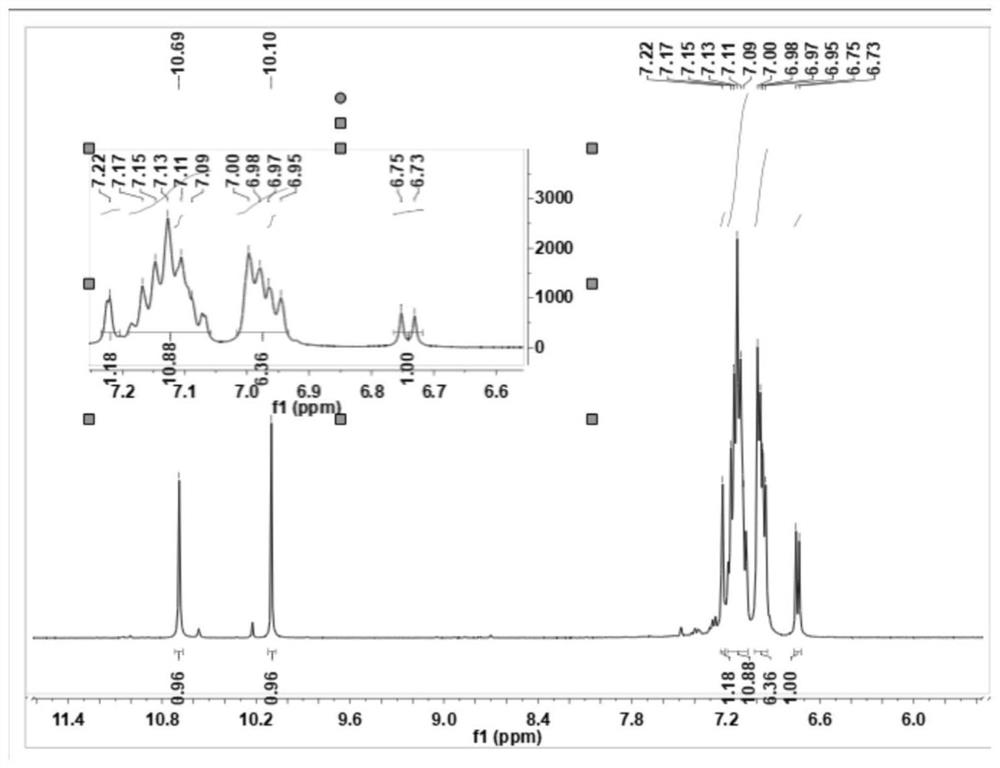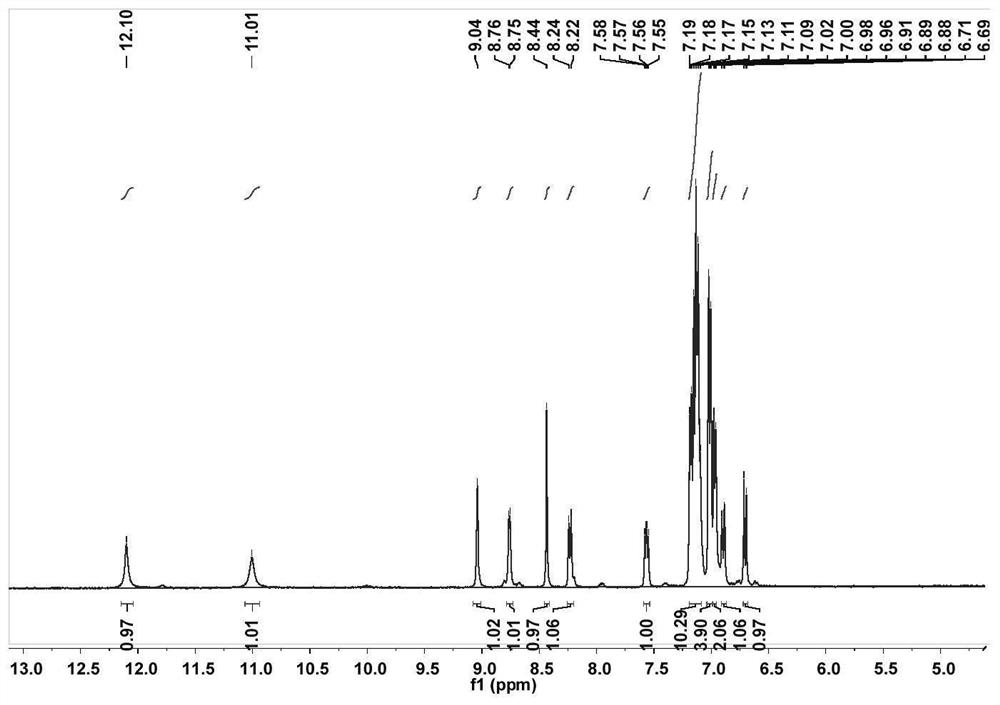A tetraphenylethylene Schiff base al3+ fluorescent probe and its preparation method and application
A technology of tetraphenylethylene and fluorescent probes, applied in the direction of fluorescence/phosphorescence, chemical instruments and methods, luminescent materials, etc., can solve the problems of growth inhibition and hindering plant growth, and achieve low detection limit, high anti-interference ability, detection The effect of high sensitivity
- Summary
- Abstract
- Description
- Claims
- Application Information
AI Technical Summary
Problems solved by technology
Method used
Image
Examples
Embodiment 1
[0068] Tetraphenylethylene Schiff base Al 3+ Preparation of fluorescent probe L:
[0069] (1) Synthesis of the first intermediate product: put 1g (2.87mmol) of 4-hydroxytetraphenylethylene and 0.40g (2.87mmol) of hexamethylenetetramine into a 100mL round bottom flask, add 8mL of acetic acid and Dissolve 8mL of trifluoroacetic acid, heat to 90°C, stir for 3 hours and then stop the reaction; cool down to 20°C, remove the solvent acetic acid and trifluoroacetic acid by rotary evaporation of the liquid under reduced pressure, mix in 4.0g of silica gel, use petroleum ether: ethyl acetate = The 50:1 eluent was separated by column chromatography to obtain a yellow solid (the first intermediate product 4-hydroxy-5-formyltetraphenylethylene), and the yield was 48.6%.
[0070] (2) Synthesis of the second intermediate product: 6.25g (50mmol) of niacin was put into a 250mL round-bottomed flask, dissolved in 150ml of methanol, and 11.90g (100mmol) of acetyl chloride was slowly added in an...
Embodiment 2
[0075] Tetraphenylethylene Schiff base Al 3+ Fluorescent Probe L on Al 3+ Selective detection of:
[0076] Configure the tetraphenylethylene Schiff base Al with a molar concentration of 1mmol / L 3+ Fluorescent probe dimethyl sulfoxide standard solution; and adding a metal ion solution with a molar concentration of 10mmol / L therein; after stirring evenly, detect the change in the fluorescence emission spectrum of the solution within 15s; wherein the metal ions include: Pb 2+ , Ni + , Na + , Mn 2+ , Li + , K + , Hg 2+ , Fe 3+ , Fe 2+ , Cu 2+ , Cr 3+ ,Co 2+ , Cd 2 + , Ca 2+ , Ba 2+ , Al 3+ , Ag + , Mg 2+ ;Such as Figure 4 As shown, the fluorescent probe has almost no emission peak at 423nm, when adding Al 3+ Finally, the fluorescent probe solution has a strong emission peak at 423nm, so the experimental results show that only adding Al 3+ , can cause the fluorescent probe solution to show obvious fluorescence enhancement at 423nm, the tetraphenylethylene Sch...
Embodiment 3
[0078] Tetraphenylethylene Schiff base Al 3+ Fluorescent Probe L on Al 3+ Fluorescence titration experiment:
[0079] Configure the tetraphenylethylene Schiff base Al with a molar concentration of 1mmol / L 3+ Fluorescent probe dimethyl sulfoxide standard solution 4.8ml; averagely divided into 24 equal parts, the equivalent of 0eq, 0.2eq, 0.4eq, ..., 4.6eq, 4.8eq of Al was added to the 1st to 24th aliquots respectively 3+ , after stirring evenly for 15s, detect the fluorescence emission spectrum of each sample, the results are as follows Figure 5 shown by Figure 5 As known, with Al 3+ As the concentration increases gradually, the fluorescence intensity of the probe solution at 423nm also increases gradually. When Al 3+ When the concentration reaches 4.8 times of the probe concentration, i.e. 4.8mmol / L, the fluorescence intensity is basically no longer enhanced, and the titration reaches saturation. Therefore, the experimental results show that the tetraphenylethylene fluo...
PUM
 Login to View More
Login to View More Abstract
Description
Claims
Application Information
 Login to View More
Login to View More - R&D
- Intellectual Property
- Life Sciences
- Materials
- Tech Scout
- Unparalleled Data Quality
- Higher Quality Content
- 60% Fewer Hallucinations
Browse by: Latest US Patents, China's latest patents, Technical Efficacy Thesaurus, Application Domain, Technology Topic, Popular Technical Reports.
© 2025 PatSnap. All rights reserved.Legal|Privacy policy|Modern Slavery Act Transparency Statement|Sitemap|About US| Contact US: help@patsnap.com



